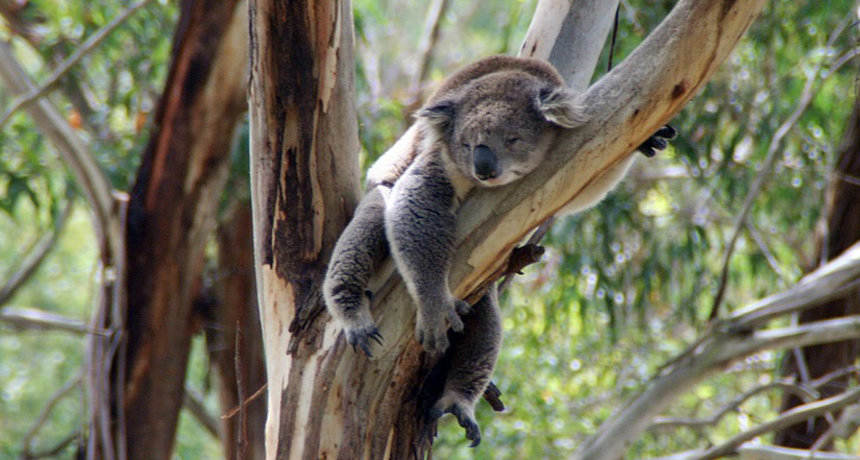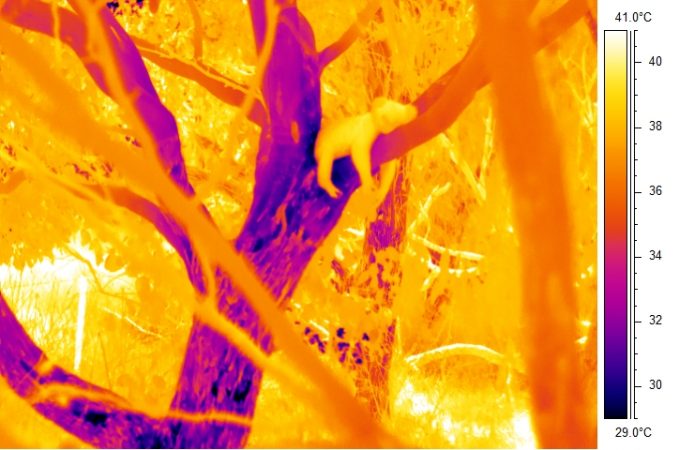Trees: Koala air conditioning
Sprawling over a tree trunk may give these animals the ability to survive heat waves

Sprawled like a dishrag, this koala is attempting to keep its cool, new research shows.
Moerschy
By Susan Milius
For koalas, sprawling against the trunk of a tree isn’t just a sign they are lazy. It could signal it’s hot — really hot. And that sprawl could provide more than half the cooling a koala needs to survive a typical hot summer day, new research shows.
Koalas don’t have dens. So there’s nowhere for them to retreat during a heat wave. Panting and licking their fur may bring some relief. But these tactics can use up precious water. In fact, it can put the animal at risk of becoming dehydrated. Flopping against tree bark that’s cooler than air can help. It’s like holding a cool glass of some lemonade up against your cheek on a hot summer’s day. It’s a newly recognized way animals cope with heat, says Michael Kearney. An ecologist, he works at the University of Melbourne in Australia.

On a hunch, the scientists used infrared photography — which displays different temperatures with different colors — to study the animals in different poses and different trees. This, and related calculations, showed that these shifts cooled the koalas. For instance, acacia trunks tend to be slightly more than 5 degrees Celsius (9 degrees Fahrenheit) cooler than the local air temperature. Briscoe, Kearney and their team report their new findings June 4 in Biology Letters.
“It gives us a very different perspective on what the habitat requirements are for koalas,” Kearny says. They need trees good at air conditioning as well as trees good for food.
Power Words
dehydrate To lose a large amount of water.
ecology A branch of biology that deals with the relations of organisms to one another and to their physical surroundings. A scientist who works in this field is called an ecologist.
eucalyptus Several species of tall and aromatic trees found naturally only in Australia. Their wood is valued for timber. The oil found in the leaves has been used in medicine. And these trees are perhaps best known as the only thing adult koalas will eat.
habitat The area or natural environment in which an animal or plant normally lives, such as a desert, coral reef or freshwater lake. A habitat can be home to thousands of different species.
infrared light A type of electromagnetic radiation invisible to the human eye. The name incorporates a Latin term and means “below red.” Infrared light has wavelengths longer than those visible to humans. Other invisible wavelengths include X rays, radio waves and microwaves. It tends to record a hit signature of an object or environment.







